Astrophysical detectives point to a cosmic supernova explosion or explosions to explain ancient extinction events here on Earth.
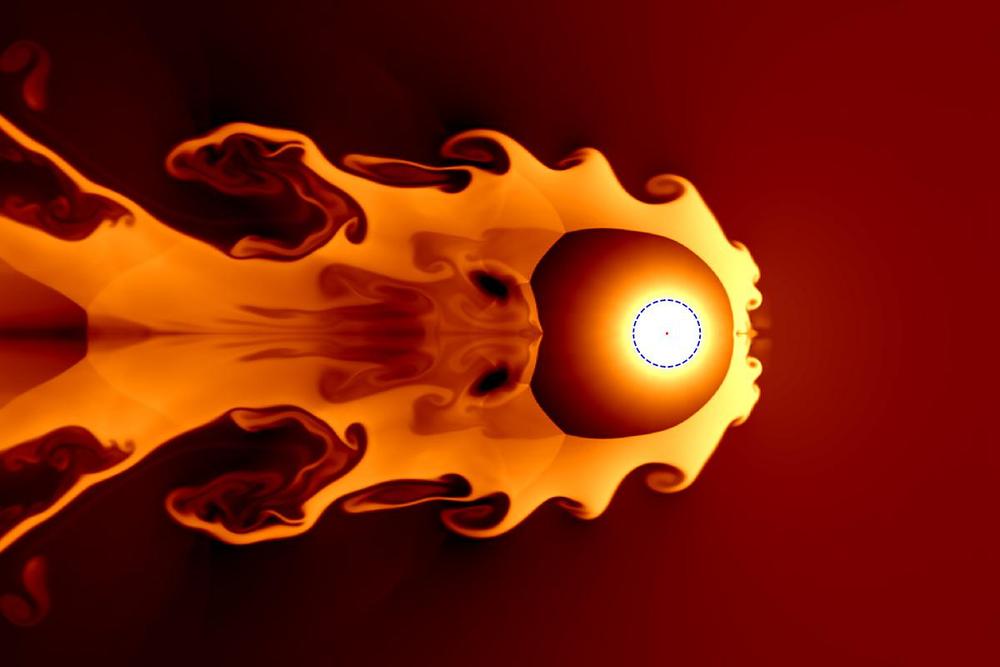

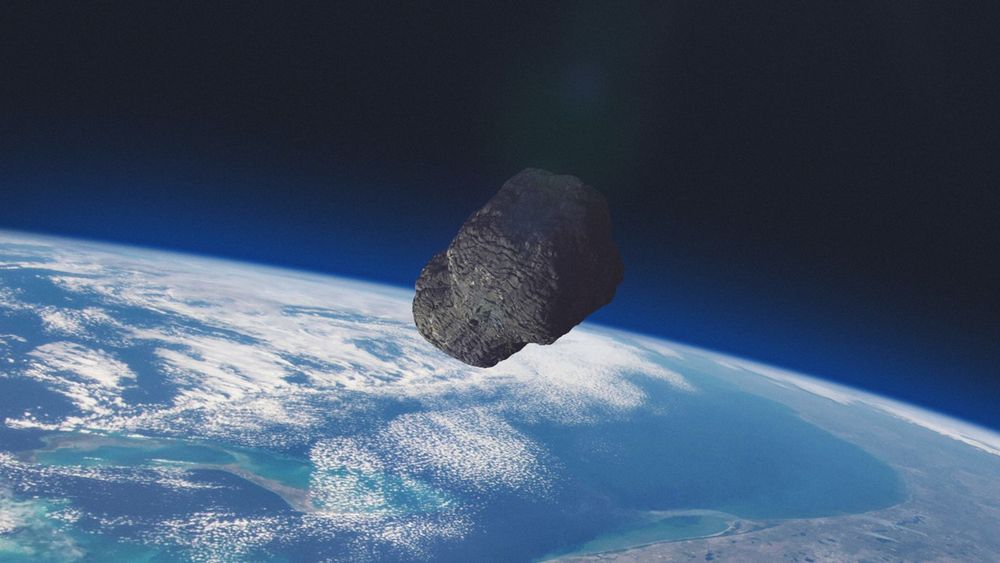
An asteroid the size of a car has flown past Earth closer than any seen before without hitting the planet — and NASA admits: “We didn’t see it coming.”
Known as asteroid 2020 QG, NASA said the space rock passed 1,830 miles (2,950 km) above the southern Indian Ocean on Sunday.
If it had actually been on an impact trajectory, it would likely have become a “fireball” as it broke up in the Earth’s atmosphere, the US space agency said.

We can’t evolve faster than our language does. Evolution is a linguistic, code-theoretic process. Do yourself a humongous favor, look over these 33 transhumanist neologisms. Here’s a fairly comprehensive glossary of thirty three newly-introduced concepts and terms from “The Syntellect Hypothesis: Five Paradigms of the Mind’s Evolution” by futurist, philosopher and evolutionary cyberneticist Alex M. Vikoulov. In parts written as an academic paper, in parts as a belletristic masterpiece, this recent book is an exceptionally easy read for an intellectual reader — a philosophical treatise that is fine-tuned with apt neologisms readily explained by given definitions and contextually… https://medium.com/@alexvikoulov/33-crucial-terms-every-futu…a1c8b993c8
#evolution #consciousness #futurism #transhumanism #philosophy
“A powerful work! As a transhumanist, I especially loved one of the main ideas of the book that the Syntellect Emergence, merging of us into one Global Mind, constitutes the quintessence of the coming Technological Singularity. The novel conceptual visions of mind-uploading and achieving digital immortality are equally fascinating. The Chrysalis Conjecture as a solution to the Fermi Paradox is mind-bending. I would highly recommend The Syntellect Hypothesis to anyone with transhumanist aspirations and exponential thinking!” -Zoltan Istvan, futurist, author, founder of the U.S. Transhumanist Party
Terms such as ‘Artificial Intelligence’ or ‘Neurotechnology’ were new some time not so long ago. We can’t evolve faster than our language does. Evolution is a linguistic, code-theoretic process. Do yourself a humongous favor, look over these 33 transhumanist neologisms. Here’s a fairly comprehensive glossary of thirty three newly-introduced concepts and terms from “The Syntellect Hypothesis: Five Paradigms of the Mind’s Evolution” by futurist, philosopher and evolutionary cyberneticist Alex M. Vikoulov. In parts written as an academic paper, in parts as a belletristic masterpiece, this recent book is an exceptionally easy read for an intellectual reader — a philosophical treatise that is fine-tuned with apt neologisms readily explained by given definitions and contextually:
AGI Naturalization Protocol, AGI(NP) — initiating AGI (Artificial General Intelligence) via human life simulation training program, infusing AGI with a value system, ethics, morality and generally civilized manners to ensure functioning in the best interests of society as a self-aware agent. Read more: http://www.ecstadelic.net/top-stories/how-to-create-friendly…-explosion #AGINaturalizationProtocol #AGINP
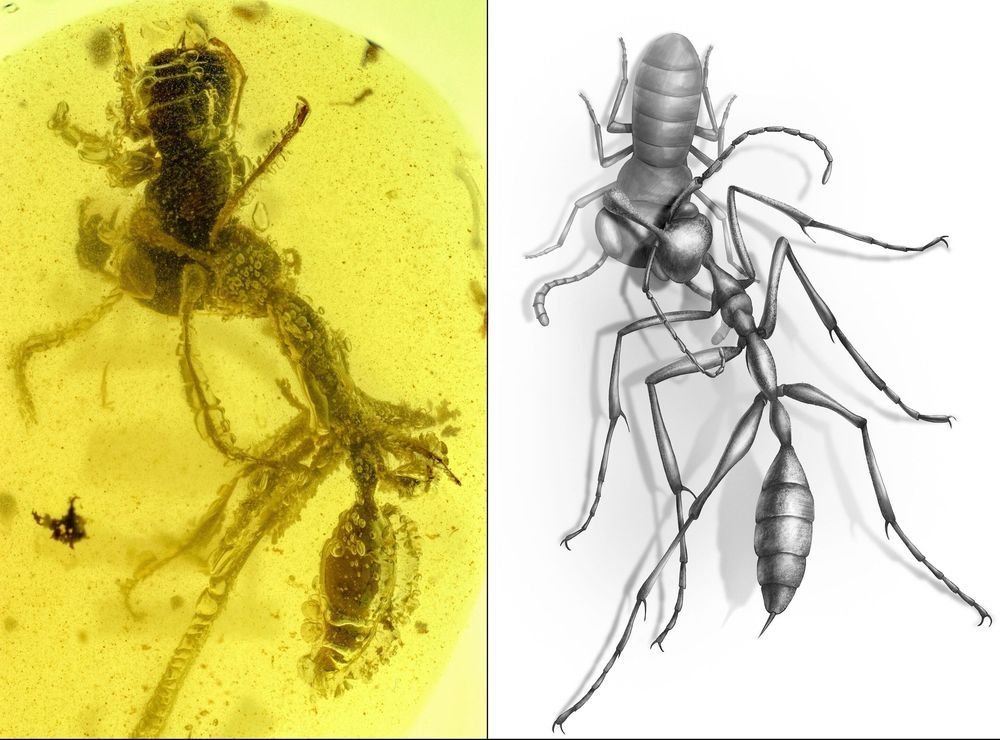
In findings published Aug. 6 in the journal Current Biology, researchers from New Jersey Institute of Technology (NJIT), Chinese Academy of Sciences and University of Rennes in France have unveiled a stunning 99-million-year-old fossil pristinely preserving an enigmatic insect predator from the Cretaceous Period—a ‘hell ant’ (haidomyrmecine)—as it embraced its unsuspecting final victim, an extinct relative of the cockroach known as Caputoraptor elegans.
The ancient encounter, locked in amber recovered from Myanmar, offers a detailed glimpse at a newly identified prehistoric ant species Ceratomyrmex ellenbergeri, and presents some of the first direct evidence showing how it and other hell ants once used their killer features—snapping their bizarre, but deadly, scythe-like mandibles in a vertical motion to pin prey against their horn-like appendages.
Researchers say the rare fossil demonstrating the hell ant’s feeding mode offers a possible evolutionary explanation for its unusual morphology and highlights a key difference between some of the earliest ant relatives and their modern counterparts, which today uniformly feature mouthparts that grasp by moving together laterally. The hell ant lineage, along with their striking predatory traits, are suspected to have vanished along with many other early ant groups during periods of ecological change around the Cretaceous-Paleogene extinction event 65 million years ago.
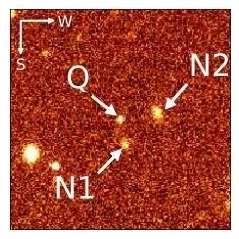
Using the Subaru Telescope, astronomers have identified two new dust-reddened (red) quasars at high redshifts. The finding, detailed in a paper published July 16 on the arXiv pre-print server, could improve the understanding of these rare but interesting objects.
Quasars, or quasi-stellar objects (QSOs), are extremely luminous active galactic nuclei (AGN) containing supermassive central black holes with accretion disks. Their redshifts are measured from the strong spectral lines that dominate their visible and ultraviolet spectra. Some QSOs are dust-reddened, hence dubbed red quasars. These objects have non-negligible amount of dust extinction, but are not completely obscured.
Astronomers are especially interested in finding new high–redshift quasars (at redshift higher than 5.0) as they are the most luminous and most distant compact objects in the observable universe. Spectra of such QSOs can be used to estimate the mass of supermassive black holes that constrain the evolution and formation models of quasars. Therefore, high-redshift quasars could serve as a powerful tool to probe the early universe.
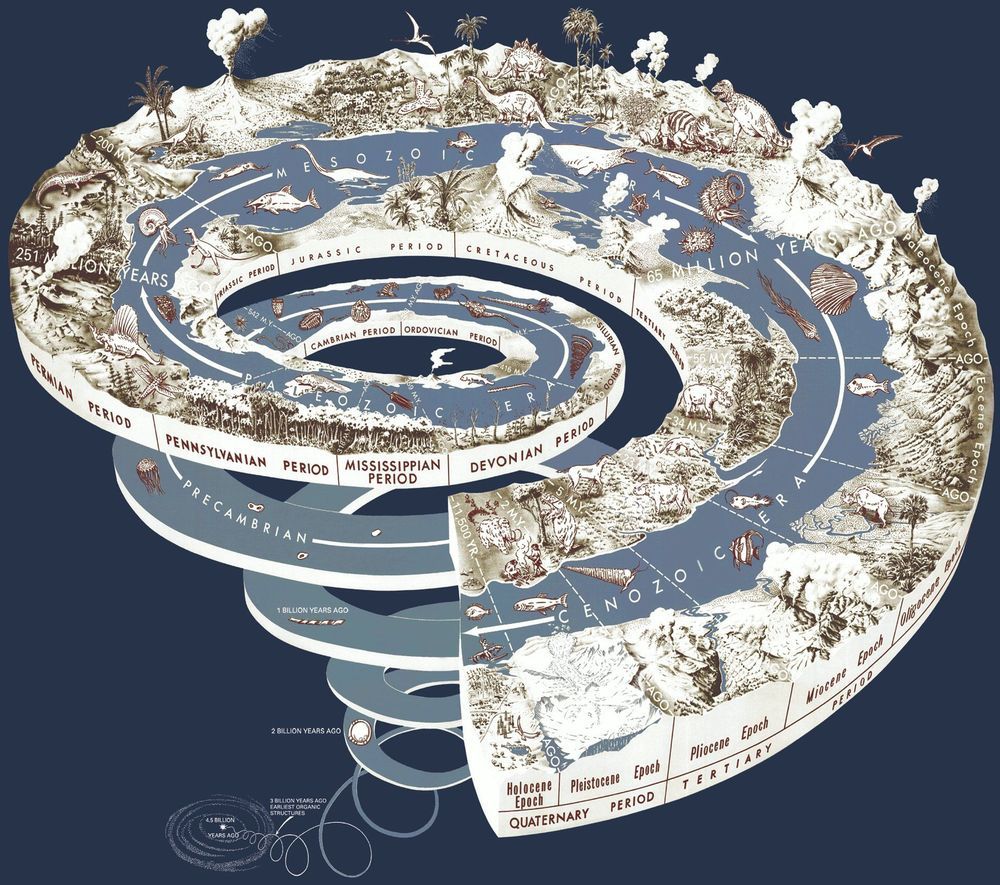
If given the chance, a Kenyan herder is likely to keep a mix of goats and camels. It seems like an irrational economic choice because goats reproduce faster and thus offer higher near-term herd growth. But by keeping both goats and camels, the herder lowers the variability in growth from year to year. All of this helps increase the odds of household survival, which is essentially a gamble that depends on a multiplicative process with no room for catastrophic failure. It turns out, the choice to keep camels also makes evolutionary sense: families that keep camels have a much higher probability of long-term persistence. Unlike businesses or governments, organisms can’t go into evolutionary debt—there is no borrowing one’s way back from extinction.
How biological survival relates to economic choice is the crux of a new paper published in Evolutionary Human Sciences, co-authored by Michael Price, an anthropologist and Applied Complexity Fellow at the Santa Fe Institute, and James Holland Jones, a biological anthropologist and associate professor at Stanford’s Earth System Science department.
“People have wanted to make this association between evolutionary ideas and economic ideas for a long time,” Price says, and “they’ve gone about it quite a lot of different ways.” One is to equate the economic idea of maximizing utility—the satisfaction received from consuming a good—with the evolutionary idea of maximizing fitness, which is long-term reproductive success. “That utility equals fitness was simply assumed in a lot of previous work,” Price says, but it’s “a bad assumption.” The human brain evolved to solve proximate problems in ways that avoid an outcome of zero. In the Kenyan example, mixed herding diversifies risk. But more importantly, the authors note, the growth of these herds, like any biological growth process, is multiplicative and the rate of increase is stochastic.

Those of you who don’t already subscribe to the scientific journal Genes might want to sign up today, so that you never miss another report on something like the rise of the Sturddlefish —a new hybrid created entirely by accident when scientists tried to save a fish from extinction.
A video on Youtube claims a forecast of near-Earth objects (NEOs) shows one of these may hit Earth in November.
On November 2, 2020 an object labeled 2018 VP1″ is currently projected to come very close to Earth. The video is a little off on its math. Even so, Mike Murray of the Delta College Planetarium in Bay City, says don’t worry.
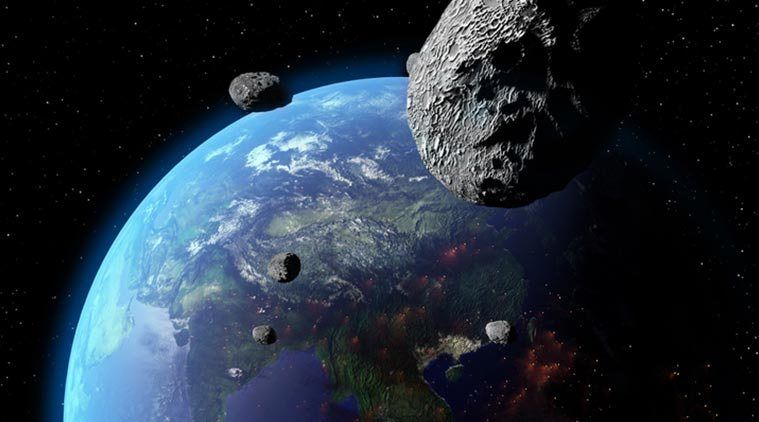
“Potentially Hazardous Asteroids (PHAs) are currently defined based on parameters that measure the asteroid’s potential to make threatening close approaches to the Earth. Specifically, all asteroids with a minimum orbit intersection distance (MOID) of 0.05 au or less are considered PHAs,” NASA said in a statement.
According to NASA, asteroid 2020 ND is about 170 metre-long will be as close as 0.034 astronomical units (5,086,328 kilometres) to our planet. The asteroid is travelling at a great speed of 48,000 kilometres per hour. The distance from the earth is what categories this asteroid as “potentially dangerous”.
2016 DY30 is headed in the direction of Earth at a speed of 54,000 kilometres per hour whereas 2020 ME3 is travelling at 16,000 kilometers per hour. The 2016 DY30 is the smaller asteroid of the two as it is 15 feet wide.
Visiting from the most distant parts of our solar system, it made its once-in-our-lifetimes close approach to the Sun on July 3, 2020 and will cross outside Earth’s orbit on its way back to the outer parts of the solar system by mid-August. Join experts on #NASAScience Live Wednesday, July 15 at 3:00 p.m. EDT to learn more about this comet and how you can spot it before it’s gone. Submit questions now using #askNASA and set a reminder to tune in!